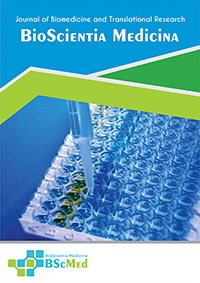Main Article Content
Abstract
Background: Traumatic globe luxation (TGL) is a rare, severe ocular emergency involving the complete displacement of the eyeball from the orbit. It presents a profound clinical challenge, demanding a rapid and accurate assessment of complex prognostic factors to guide the difficult decision between globe salvage and primary enucleation.
Case presentation: A 33-year-old male presented 18 hours after a motorcycle handlebar strike to his left orbit. The examination revealed a left globe luxation with No Light Perception (NLP) vision, a total afferent pupillary defect, and complete ophthalmoplegia. Computed tomography confirmed a closed-globe injury with a superior orbital rim fracture and a large retrobulbar hematoma, but could not delineate soft tissue integrity. Surgical exploration revealed two critical, paradoxical findings: an anatomically intact optic nerve despite its functional death, and a catastrophic avulsion of five of the six extraocular muscles. The medial, lateral, and inferior recti, along with both oblique muscles, were detached, while the superior rectus muscle was uniquely spared.
Conclusion: Based on the catastrophic loss of vascular supply from the avulsed muscles, which rendered the globe biologically non-viable, a primary enucleation was performed. This case suggests that in TGL, the integrity of the extraocular musculature is a paramount prognostic indicator, potentially superseding the anatomical status of the optic nerve in determining globe viability. It highlights the necessity of intraoperative exploration to definitively assess the extent of injury and illustrates a scenario where primary enucleation is not a treatment failure, but a definitive, rehabilitation-focused therapeutic strategy.
Keywords
Article Details
As our aim is to disseminate original research article, hence the publishing right is a necessary one. The publishing right is needed in order to reach the agreement between the author and publisher. As the journal is fully open access, the authors will sign an exclusive license agreement.
The authors have the right to:
- Share their article in the same ways permitted to third parties under the relevant user license.
- Retain copyright, patent, trademark and other intellectual property rights including research data.
- Proper attribution and credit for the published work.
For the open access article, the publisher is granted to the following right.
- The non-exclusive right to publish the article and grant right to others.
- For the published article, the publisher applied for the Creative Commons Attribution-NonCommercial-ShareAlike 4.0 International License.





